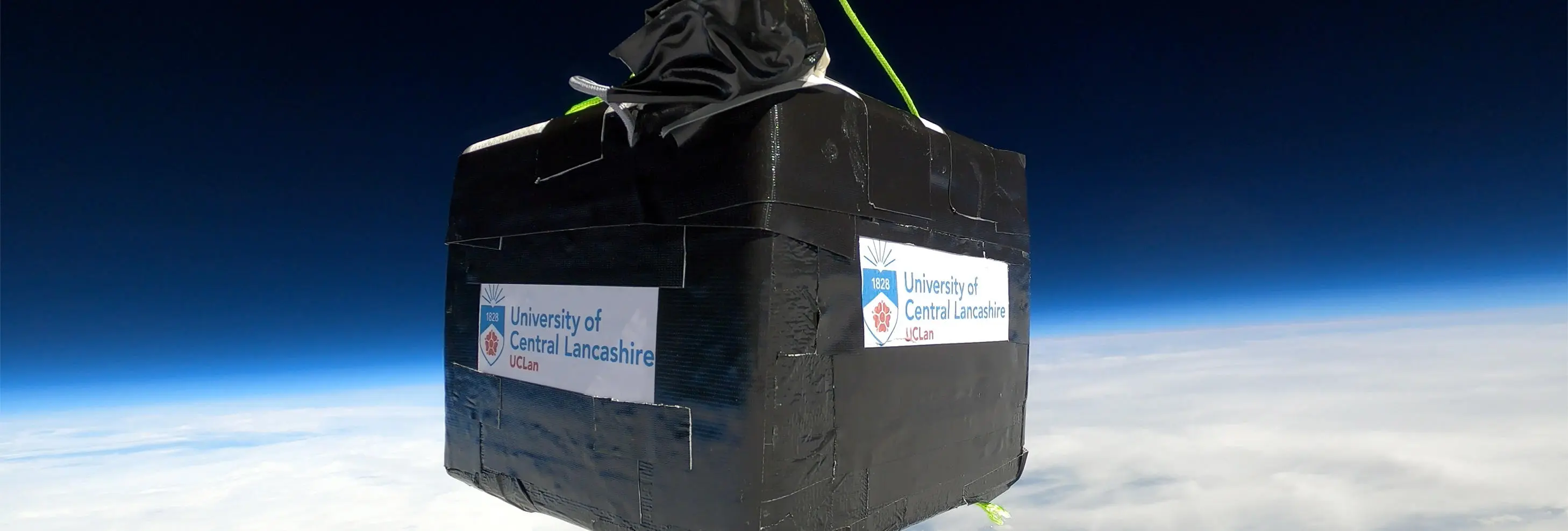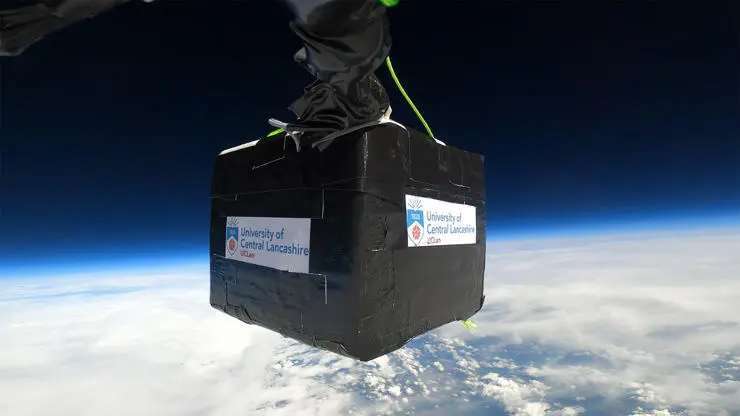Students make a stellar impact through high-altitude balloon experiments
The sky was no limit for physics and engineering students from the University of Central Lancashire (UCLan) after they sent a high-altitude balloon into near space.
The balloon reached about 30 km or 100,000 ft above the surface of the Earth, which is more than three times the height reached by an average aeroplane, and its entire flight was captured on camera.
The final year students organised every aspect of the flight, from what is needed to carry a cargo of relevant instruments needed to collect data – known as an instrument payload – to obtaining flight authorisations from the Civil Aviation Authority, as well as launching and safely recovering the experiments upon landing.
"To work as a team, see the experiment lift off and then recover the payload was a great learning experience. Out of this world really!"
— Third-year physics student Jordan Wolken
In addition to being a stunning location to capture images of the Earth, high altitude balloons can be used for many research purposes. With temperatures of up to minus 60 degrees and a very thin atmosphere, this environment offers a platform to test instruments and materials before making the more expensive journey into space itself.
One student experiment investigated cosmic rays, which are high energy particles that flow into our solar system from outer space.
Third-year physics student Jordan Wolken was part of the team. He said: “It was amazing when all the elements for the balloon launch came together. To work as a team, see the experiment lift off and then recover the payload was a great learning experience. Out of this world really!”
"This is applied learning that reflects elements of the skills required to provide our students with the opportunity to step in careers in the growing UK space sector."
— Robert Walsh, Professor of Astrophysics at UCLan
Robert Walsh, Professor of Astrophysics at UCLan, said: “It was excellent working with students from both physics and engineering to plan and launch the balloon experiments. This is applied learning that reflects elements of the skills required to provide our students with the opportunity to step in careers in the growing UK space sector.”
Dr Kirijen Vengadasalam, Senior Lecturer in Engineering, added: “The planned mission was very successful, the payload was recovered, and we are now in the process of analysing the flight data. This is the sort of hands-on experience students at UCLan thrive upon – and it’s also a lot of fun!”
The balloon was released from the events venue Valiants UK, Out Rawcliffe, just north of Preston. Valiants owner Edgar Wallace said: “What a fabulous privilege it was to assist the UCLan students to launch the high-altitude balloon. It was a successful event, enjoyed by us all and we hope to work with the University again in the near future.”
UCLan has been involved in similar balloon tests on previous occasions. In the first experiment of its kind, UCLan researchers explored the practical applications of exploiting graphene in the UK space industry through the launch of specially designed graphene-enhanced carbon fibre material using high altitude balloons.


